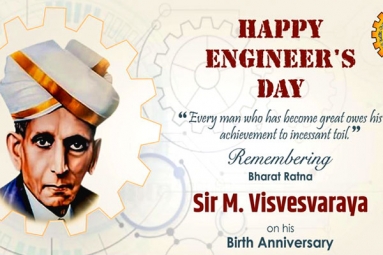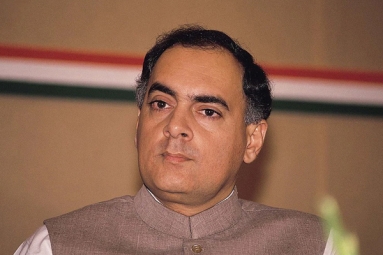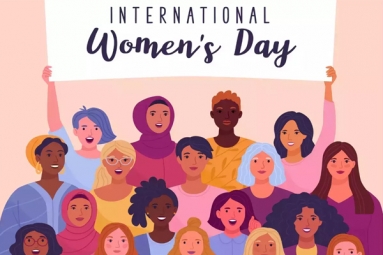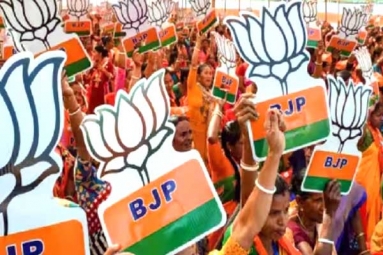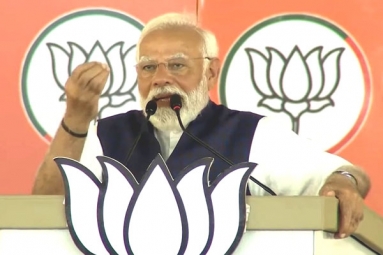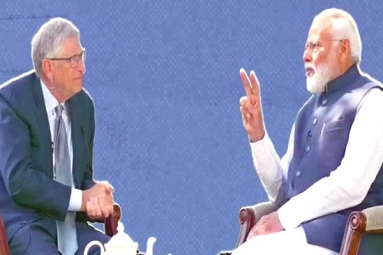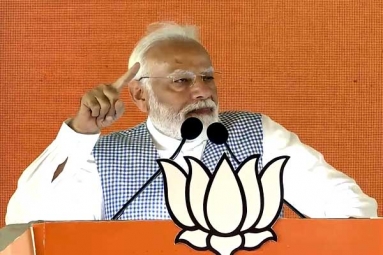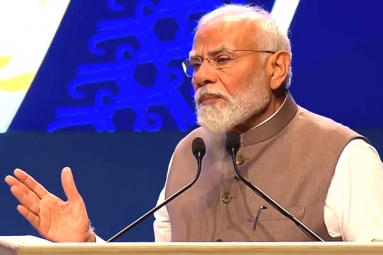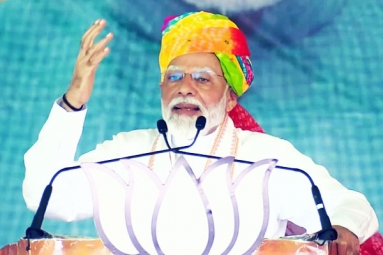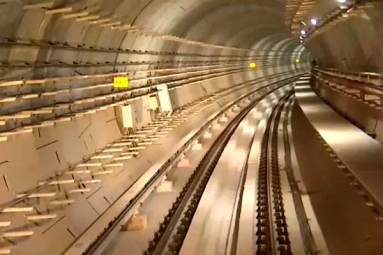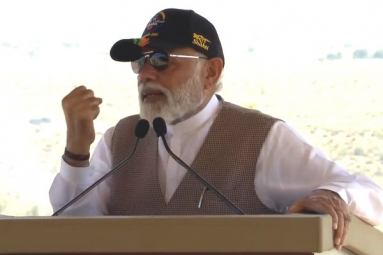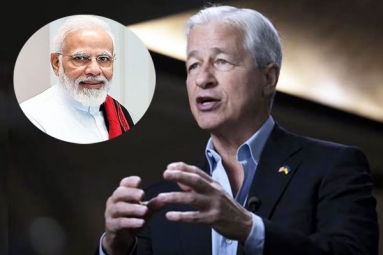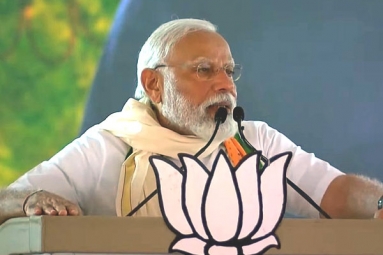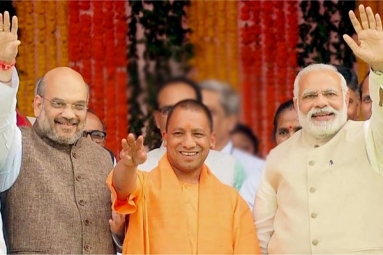
(Image source from: Narendra Damodardas Modi India next prime minister)
Narendra Damodardas Modi has had a great leap forward from his humble origin. Modi, who once sold tea as a boy in railway platforms, symbolised hope for the people of India, looking for change desperately in a country where 10 years of UPA rule had seen alarming rise in corruption and price rise.
From an ordinary housewife to business houses everyone wanted to see change in the way the government functions. Narendra Modi's election campaigns focused on the much needed change to bring growth and development into the country.
Narendra Modi had been serving as Gujarat Chief Minister for the fourth successive term before being appointed BJP’s Prime Ministerial candidate in 2014 Lok Sabha Elections. Here is an attempt at the life and achievements of the next prime minister of India.
Shri Narendra Modi was born in September, 1950 at Vadnagar, in Gujarat's Mehsana district to Damodardas Mulchand Modi and his wife, Heeraben. He was the third among six children. Belonging to a family of grocers, young Modi used to help his father at his tea-stall.
Values like generosity, benevolence and social service are deeply entrenched in the 63-year-old BJP leader. As a young boy, when India-Pak war broke out in mid sixties, Modi volunteered to serve soldiers at railway stations while in transit. During the 1967 flood in Gujarat he served the people affected by the natural calamity.
Modi has inborn organisational skill and has an insight into human psychology that gives him an edge as a leader. He was a member of the Akhil Bharatiya Vidyarthi Parishad (ABVP) and played an important role in several movements in Gujarat – both social and political.
Strength of character and courage has been the greatest attribute of Narendra Modi. His life was beset with obstacles right from childhood to his college days. But he never stepped back from challenges, a characteristics which have seen him through the greatest hurdles in life. Modi's days in college and University for higher educcation was really tough. But he refused to give up and was able to complete his post graduation in political science.

Narendra Modi joined the Rashtriya Swayamsevak Sangh (RSS), a socio-cultural organization that endeavours to bring about socio-cultural development of India. As a member of RSS he inculcated virtues like nationalism, selflessness, dedication and social responsibility.
During his days in the RSS, Modi played an important roles in the Navnirman anti-corruption agitation in 1974. He went underground when 19-month (June 1975 to January 1977) long Emergency was imposed and fought a spirited battle against the dictatorial government at the centre.
In 1987, Narendra Modi joined mainstream politics by becoming an active member of the BJP. Hes dedication saw him elevated to the post of General Secretary of the Gujarat unit within a period of one year. Within the short period he became known for his efficient organisational abilities.
Modi took up the challenge of guiding and orginising the party cadres. His efforts paid when the BJP was able to form a coalition government at the centre in April 1990. The union government fell in a few months but the BJP was voted to power in Gujarat with a two-thirds majority in 1995. And Gujarat has been under the BJP rule till now.
Narendra Modi was also instrumental in the BJP coming to power in 1998. He was in charge of organising two crucial national events of the BJP. L.K. Advani's Somnath to Ayodhya Rath Yatra and the march from Kanyakumari to Kashmir was successfully handled by Modi. These two 'yatras' had made the BJP popular among the masses of India.
He has held several important posts in BJP before becoming the chief minister of Gujarat. In 1995, Modi was appointed BJP's National Secretary and five major states in India were placed under his charge. From 1998 to October 2001 he held the post of General Secretary (Organization). After that he was chosen to the Chief Minister of Gujarat.
Modi, while working at the national level, emerged a strong spokesman for the BJP and played important role in the party on various crucial occasions. At this time he also travelled around the world and interacted with prominent leaders of many countries. Experiences gained during this time intensified his passion to seve his country and lead it to supremacy in the comity of nations.

In October 2001 he was asked to lead Gujarat and on October 7, 2001 Narendra Modi was sworn in the chief minister of Gujarat. At that time the economy of Gujarat was under severe stress due to natural calamities, which included the massive Bhuj earthquake of January 2001. The first challenge of Narendra Modi as chief minister of the state was to reconstruct and rehabilitate the earthquake affected areas. Modi used his national and international exposure and experience to rebuild Bhuj, the city that had turned into rubble.
During the first 100 days of his coming to power his capacity and intensions were displayed to the people. He launched the Panchamrut Yojana, a five-pronged strategy that would lead to an integrated development of Gujarat. He focused on an integrated socio-economic growth for the state.
Gujarat, under Narendra Modi’s leadership, was put on the road to prosperity. His policy-driven reform programmes and changes in government’s administrative structure brought about massive transformation in various sectors like healthcare, education, agriculture and others.
The people of Gujarat, who had witnessed the massive transformation, voted him to power with a landslide victory in the December 2002 assembly elections, winning 128 seats in a house of 182. Modi continued to lead the state with a vision of growth and development, and his government was voted to power again in 2007 with a record majority.
Again in 2012, under Narendra Modi’s leadership, the BJP was voted to another massive victory winning 115 seats. On 26th December 2012, Modi was sworn-in the chief minister of Gujarat for the 4th successive term.
The people of Gujarat are more than happy with the performance of Modi’s government. Today the state is leading in sectors like investments, e-Governance, power, SEZs, fiscal discipline, poverty eradication, road development and several others. Gujarat‘s growth story is based on all three sectors of development - agriculture, industry and services.
The moto of Narendra Modi’s government has been "Sabka Saath, Sabka Vikas". Gujarat’s development is an example of good governance, where the people of the state have been active partners in the state’s progress coupled with government efforts.
(AW: Pratima Tigga)







